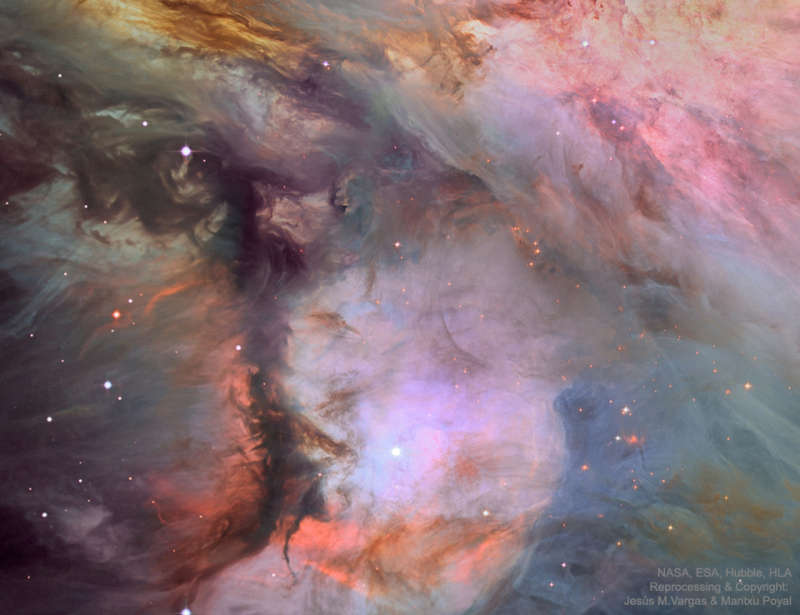
|
Credit & Copyright: Jesăs M.Vargas & Maritxu Poyal
Explanation:
The Great Nebula in Orion,
an immense, nearby
starbirth region,
is probably the most famous of all
astronomical nebulas.
Here, filaments of dark dust and glowing gas
surround hot young stars at the edge of an
immense interstellar
molecular cloud only 1500
light-years away.
In the featured deep image shown in assigned colors,
part of the nebula's center is shown as taken by the
Hubble Space Telescope.
The Great Nebula in Orion can be found with the
unaided eye near the
easily identifiable
belt of three stars in the popular constellation
Orion.
In addition to housing a bright
open cluster of stars known as the
Trapezium, the
Orion Nebula contains many
stellar nurseries.
These nurseries contain much
hydrogen gas, hot young stars,
proplyds, and
stellar jets
spewing material at high speeds.
Also known as
M42, the
Orion Nebula spans about 40
light years and is located in the same
spiral arm of
our Galaxy as the
Sun.
|
January February March April May June July August September October November December |
| ||||||||||||||||||||||||||||||||||||||||||||||||
NASA Web Site Statements, Warnings, and Disclaimers
NASA Official: Jay Norris. Specific rights apply.
A service of: LHEA at NASA / GSFC
& Michigan Tech. U.
Based on Astronomy Picture
Of the Day
Publications with keywords: Orion Nebula - M 42 - dust
Publications with words: Orion Nebula - M 42 - dust
See also:
- Orion and the Running Man
- APOD: 2025 August 28 ┴ Galaxies, Stars, and Dust
- APOD: 2025 August 13 ┴ Trapezium: In the Heart of Orion
- APOD: 2025 April 20 ┴ The Orion Nebula in Visible and Infrared
- Young Stars, Dark Nebulae
- APOD: 2024 November 4 ┴ M42: The Great Nebula in Orion
- APOD: 2024 September 29 ┴ Seven Dusty Sisters
